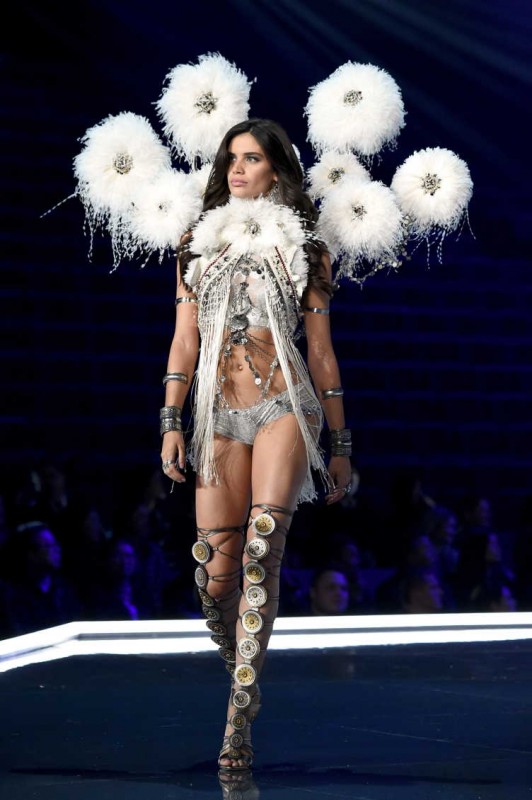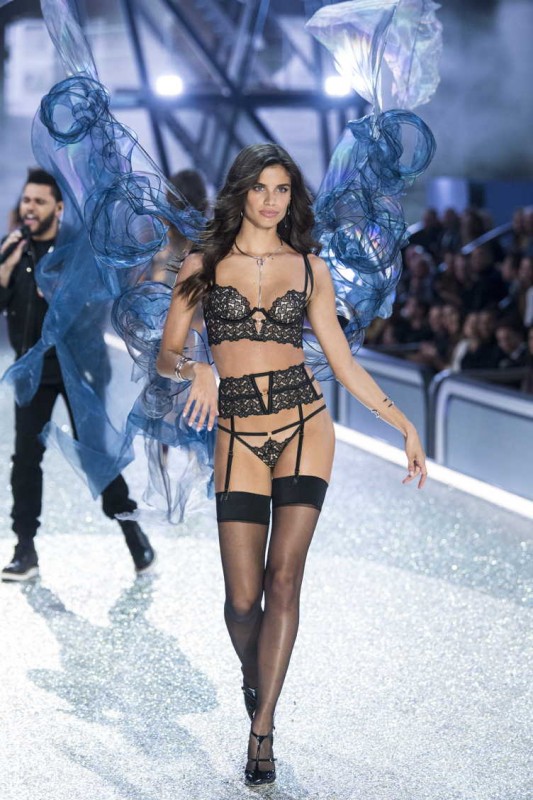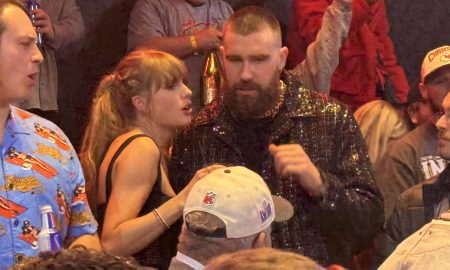
Photo Credit: Theo Wargo/Getty Images for Victoria’s Secret
Victoria’s Secret Angel Sara Sampaio is really living up to her job description. The Portuguese model is teaming up with The TLC Foundation to give one lucky winner the exclusive chance to attend the 2018 Victoria’s Secret Fashion Show in New York City and meet her after she struts down the catwalk, through an online auction benefiting those suffering from Body-Focused Repetitive Behaviors.
The cause is personal for Sampaio, who revealed her own struggle with Trichotillomania earlier this year on social media. After sharing her story, her Instagram account was flooded with messages from young girls who were ashamed of their own body-focused repetitive behaviors, which prompted her to partner with The TLC Foundation, a donor-supported, nonprofit organization devoted to ending the suffering caused by hair pulling disorder, skin picking disorder, and related body-focused repetitive behaviors. Through their partnership and the money raised from the auction, Sara hopes to de-stigmatize the disorder and provide support to those suffering.
Here, this Angel shares how she became involved with the organization, why she decided to share her story and how she makes herself feel beautiful on a daily basis.

Photo Credit: FashionStock.com : Shutterstock.com
Tell us how you became involved with the TLC Foundation.
After I shared my story about Tricho on Instagram, I got an email from The TLC Foundation thanking me for sharing, and that they would love to meet me. So I had a lovely meeting with them in Los Angeles, and together we shared personal stories and talked about how I could get involved and help.
What prompted you to share your personal struggle with Trichotillomania?
I wouldn’t call it a struggle, at least not for me. I never looked at it as something I was ashamed of, and I’ve always been very open about it with my family and friends. To me it’s just something weird that I do. So, when someone asked me on social media how I took care of my eyebrows I simply said I had gaps from my Tricho and talked about how I covered them. After mentioning Tricho I started receiving many messages from people that suffered from it as well, so I decided to talk a little bit more about my experience.
What was the kindest thing someone told you when you shared your story? Who was it and what was it, and how did this comment impact you?
I think every message I have received has been kind. Most messages were from people thanking me for sharing my story and that they were so ashamed of their own Tricho, that they never had the courage to talk about it. Many people told me that I inspired them to get help and talk to someone about it. I think one of the best messages I got recently was from a girl who told me that after I shared my story, she became so much more confident and didn’t feel alone anymore. Because of that, she actually stopped pulling her eyebrows and hasn’t done it for a month. It just makes me so happy and warms my heart that I was able to help someone with their struggle.

Photo Credit: Dimitrios Kambouris/Getty Images for Victoria’s Secret
When did you realize that you had a problem, and how did you receive help?
I never looked at it as a problem, but it was something I knew I did for a while. I think I started wondering why I pull on my eyebrows when I started noticing gaps. In the beginning I didn’t really know what it was, but makeup artists would ask me what happened to my eyebrows and would tell me to stop doing it (like it was that easy). As a kid I had a few ticks that eventually went away, so I thought that this would also go away. I found out it was called Tricho one day while Googling. Only in the beginning of this year did I actually decide to consult a doctor, mainly because I was worried I would eventually start doing it to my hair.
What do you want others suffering from BFRBs to know?
I want them to know that they at no point should feel ashamed or insecure about it and that talking about it helps. Also please use TLC Foundation as a resource to look for help as there are a few things that can be done to help.
How do you hope to de-stigmatize this order?
I think my main goal is to just educate people about it so that when they encounter someone suffering from it they can be kind and helpful. The thing we hear the most is: JUST STOP. But if it was that simple this disorder wouldn’t exist. This is a disorder that can really affect someone’s self-confidence, so showing kindness and support is very important.
How do you personally feel beautiful every day?
I think I feel the most beautiful when I’m surrounded by people that I love. I know its cliché, but I think without happiness there’s no beauty.

























